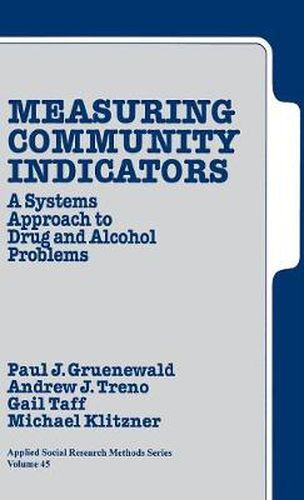Readings Newsletter
Become a Readings Member to make your shopping experience even easier.
Sign in or sign up for free!
You’re not far away from qualifying for FREE standard shipping within Australia
You’ve qualified for FREE standard shipping within Australia
The cart is loading…






How do communities go about measuring the effectiveness of their drug and alcohol abuse programmes? This useful volume provides communities and researchers with the necessary analytic and practical tools for assessing their programmes. The authors begin with a presentation of how to collect community indicator data, arguing that while highly aggregated national data perform a number of important research and policy functions, such data are distinct from community indicator data and of questionable use to local policy-oriented officials. Next, they present a theoretical perspective, developed from community systems theory, as a basis for the practical strategies outlined in the book. They then cover topics such as: different community indicators; the role of community surveys in filling the gaps in available ‘official statistics’; and specific techniques for the primary collection of community indicator data.
$9.00 standard shipping within Australia
FREE standard shipping within Australia for orders over $100.00
Express & International shipping calculated at checkout
How do communities go about measuring the effectiveness of their drug and alcohol abuse programmes? This useful volume provides communities and researchers with the necessary analytic and practical tools for assessing their programmes. The authors begin with a presentation of how to collect community indicator data, arguing that while highly aggregated national data perform a number of important research and policy functions, such data are distinct from community indicator data and of questionable use to local policy-oriented officials. Next, they present a theoretical perspective, developed from community systems theory, as a basis for the practical strategies outlined in the book. They then cover topics such as: different community indicators; the role of community surveys in filling the gaps in available ‘official statistics’; and specific techniques for the primary collection of community indicator data.